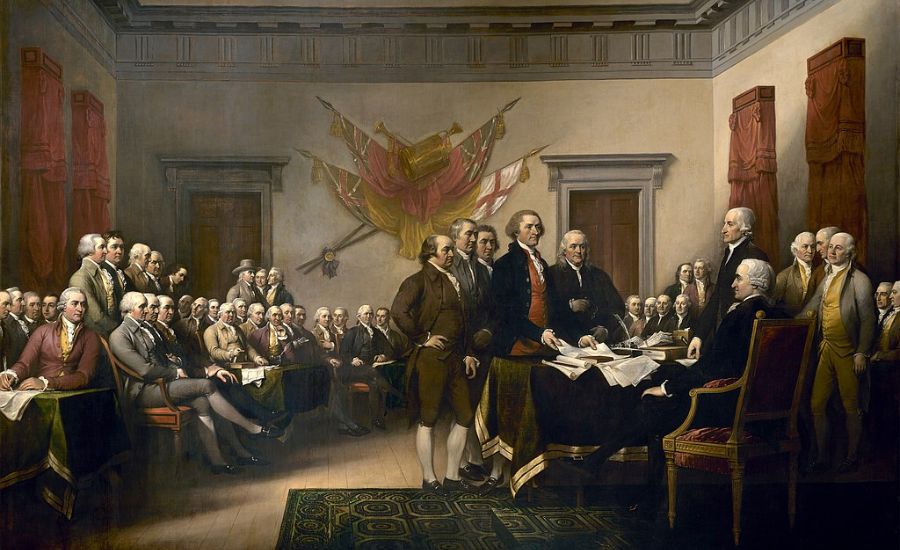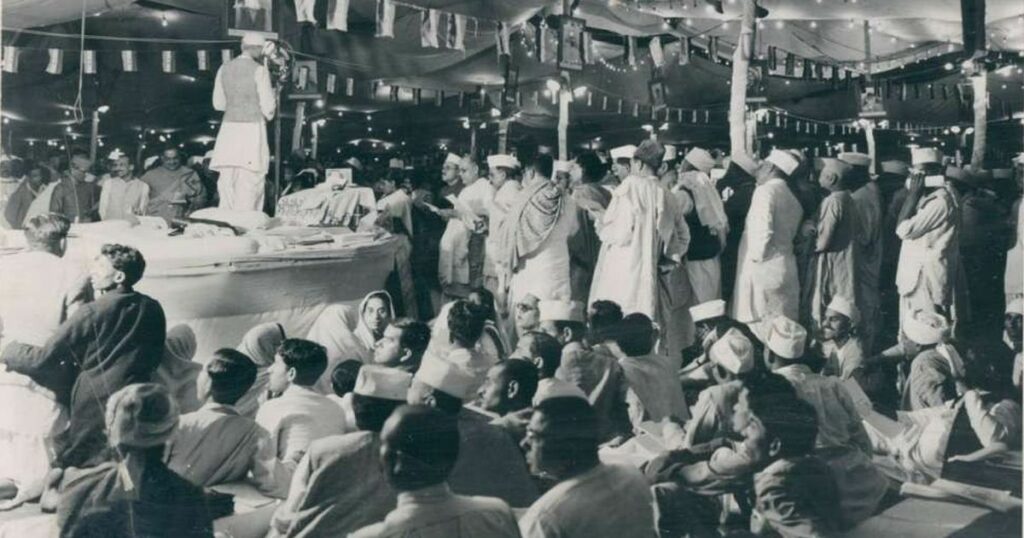

On 4 July 1776, representatives of the thirteen American colonies signed the Declaration of Independence, marking their liberation from British colonial rule. In celebration of the 4th of July, annually recognized as American Independence Day, we decided to take a look at the impact of the Declaration of Independence on its Indian counterpart – the Declaration of Purna Swaraj.
After independence, the American colonies became states that were governed by the Articles of Confederation and Perpetual Union. It contained only four Articles which created a confederacy of states with a weak national government that was unable to enforce laws or borrow money. Realizing that this was an ineffective system of governance, representatives of the states gathered at the Constitutional Convention in 1787 to draft what is today known as the Constitution of the United States.
The principles contained in the Declaration of Independence were the ideological inspiration for this Constitution, which came into force in 1789. It is widely said that ‘the Declaration of Independence was the promise; the [American] Constitution was the fulfilment’.
Jawaharlal Nehru described the American constitutional experiment as one of the major inspirations for India’s constitution-building process. While the influence of the American Constitution on its Indian counterpart is well-documented, other instruments like the Declaration of Independence also played a role in the build-up to the making of India’s Constitution.
On 26th January 1930, the Indian National Congress passed the Declaration of Purna Swaraj or ‘total independence’. Lord Irwin, the Viceroy of India, was forced to backtrack on his promise to grant India dominion status due to opposition from the British public. This irked the Congress, who then issued this Declaration, marking the first time a national party demanded full independence from British rule rather than dominion status.

In The Declaration of Independence: A Global History, David Armitage observed that while similar proclamations of independence had occurred in other countries, the Purna Swaraj Declaration marked the first time that ‘an anticolonial movement against the British markedly deployed the revolutionary language of the American Declaration’.
The organization of the two Declarations is remarkably similar. Both Declarations begin with preambles which refer to the inalienable right to life. They then go on to list the various crimes committed by the British Empire during colonial rule in order to justify the demand for independence.
However, there are marked differences in the content and purpose of the Declarations. The Purna Swaraj Declaration placed more emphasis on its aspirations for independence through non-cooperation than on the prescription of values. This is likely because it was intended to set out a blueprint to achieve independence, rather than a vision for a newly-independent country. Gandhi himself clarified that its purpose was ‘not to declare independence but to declare that we will be satisfied with nothing less than total independence’.
On the other hand, the American Declaration signified that British colonial rule had already ended in the country. Its purpose was to set out a vision for the future of America while simultaneously declaring its independence. The Declaration stated that the United States is ‘absolved from all allegiance to the British Crown, and…all political connection between them and…Great Britain, is and ought to be dissolved’. While both Declarations invoked an inalienable right to life, the American Declaration also referred to democratic rule, ‘liberty, and the pursuit of happiness’.
In the centuries since its’ adoption, the Declaration of Independence has inspired similar proclamations in several countries, particularly during the decolonization movements in the 1900s. In fact, when Subhash Chandra Bose proclaimed Azad Hind as the first independent Indian government, he relied on the language of the American Declaration to pledge his government’s ‘firm resolve to pursue the happiness of the nation’.